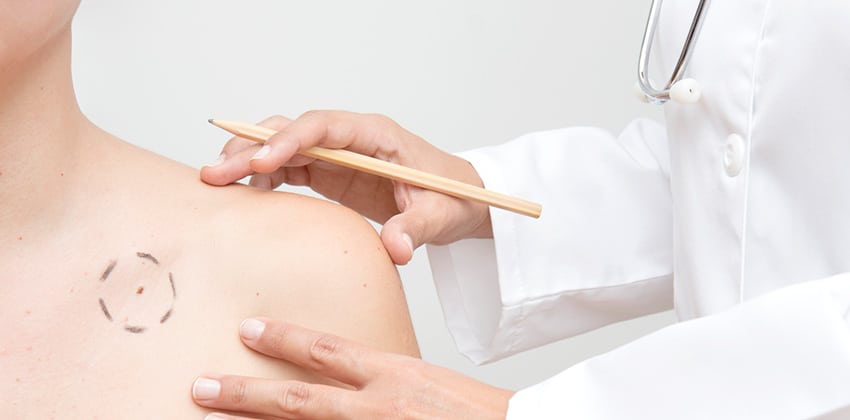Skin Lesion Removal in Dubai encompass a wide variety of abnormalities that can appear on the skin, ranging from benign growths to potentially malignant tumors. Understanding the various types of skin lesions and the appropriate removal methods is essential for patients seeking effective treatment. This article provides a comprehensive overview of common skin lesions, their characteristics, and the options available for removal.
Types of Skin Lesions
1. Benign Lesions
Benign skin lesions are non-cancerous growths that typically do not pose a health risk. However, they may cause cosmetic concerns or discomfort.
- Skin Tags: These are small, soft pieces of skin that protrude from the surface and can be found in areas where skin rubs against skin. While harmless, they can be removed for aesthetic reasons.
- Warts: Caused by the human papillomavirus (HPV), warts are rough, raised bumps that can appear on any part of the body. They are generally harmless but may be removed if they cause pain or embarrassment.
- Moles: Most moles are benign, but changes in their appearance may require evaluation. If a mole becomes irregular in shape, color, or size, it may necessitate removal and biopsy.
2. Precancerous Lesions
These lesions may indicate an increased risk of developing skin cancer in the future. Early detection and removal are crucial.
- Actinic Keratosis: Often arising from prolonged sun exposure, these rough patches on the skin can evolve into squamous cell carcinoma if left untreated. Treatment options include cryotherapy and topical medications.
- Dysplastic Nevi: These atypical moles have an irregular shape and varied color. While they are not cancerous, they can be precursors to melanoma. Regular monitoring and potential removal are recommended.
3. Malignant Lesions
Malignant lesions are cancerous and require prompt treatment to prevent metastasis.
- Basal Cell Carcinoma (BCC): This is the most common type of skin cancer, typically appearing as a small, shiny bump. BCC rarely spreads but should be treated to prevent local destruction.
- Squamous Cell Carcinoma (SCC): SCC can develop from actinic keratosis and may spread to other parts of the body. Early removal is essential for successful treatment.
- Melanoma: This aggressive form of skin cancer arises from pigment-producing cells and can metastasize rapidly. Early detection is crucial for improving prognosis, and surgical removal is often necessary.
Removal Options for Skin Lesions
1. Surgical Excision
Surgical excision involves cutting out the lesion along with a margin of healthy tissue. This method is commonly used for both benign and malignant lesions.
- Procedure Overview: Performed under local anesthesia, the surgeon removes the lesion and closes the wound with sutures. This technique ensures that any cancerous cells are completely excised.
- Recovery Considerations: Patients can expect some swelling and discomfort post-surgery, but proper care and follow-up appointments help ensure optimal healing.
2. Cryotherapy
Cryotherapy is a minimally invasive procedure that uses extreme cold to destroy abnormal tissue. It is particularly effective for benign lesions and some precancerous conditions.
- Application Process: Liquid nitrogen is applied to the lesion, freezing it and causing it to die off. The treated area may blister, and the lesion typically falls off within a few weeks.
- Advantages: Cryotherapy is quick, requires little downtime, and can often be performed in an outpatient setting. However, multiple sessions may be needed for larger lesions.
3. Laser Therapy
Laser therapy utilizes focused light energy to target specific skin lesions. This method can be effective for various types of lesions, including pigmentation issues, vascular lesions, and some benign growths.
- Types of Lasers:
- Ablative Lasers: These remove the outer layer of skin and are useful for treating scars and rough patches.
- Non-Ablative Lasers: These penetrate deeper layers of skin without damaging the surface, promoting collagen production and skin tightening.
- Benefits of Laser Therapy: Patients experience minimal discomfort and downtime, and the precision of lasers allows for targeted treatment with reduced risk of scarring.
4. Mohs Micrographic Surgery
Mohs surgery is the gold standard for treating certain types of skin cancer, particularly BCC and SCC.
- Procedure Explanation: This technique involves removing the cancerous tissue layer by layer, with each layer examined microscopically for cancer cells. This process continues until clear margins are achieved.
- Advantages: Mohs surgery boasts a high cure rate while preserving as much surrounding healthy tissue as possible, making it an ideal choice for lesions on the face or other cosmetically sensitive areas.
Preparing for Skin Lesion Removal
1. Consultation with a Dermatologist
The first step in the skin lesion removal process is a thorough consultation with a qualified dermatologist. This visit will involve:
- Medical History Review: The dermatologist will assess the patient's medical history, including any previous skin issues or family history of skin cancer.
- Physical Examination: A detailed examination of the lesion will help determine its type and whether removal is necessary.
2. Discussing Treatment Options
During the consultation, the dermatologist will discuss the various treatment options available and their associated risks and benefits. This dialogue helps patients make informed decisions based on their specific circumstances.
3. Setting Realistic Expectations
Understanding what to expect from the removal procedure is vital for patient satisfaction. Dermatologists should provide information on potential outcomes, recovery times, and post-procedure care to help set realistic expectations.
Conclusion
Skin lesions come in various forms, and understanding their characteristics is essential for effective treatment. With numerous removal options available, including surgical excision, cryotherapy, laser therapy, and Mohs surgery, patients can select the most appropriate method in consultation with their dermatologist. By being proactive about skin health and seeking timely treatment for abnormal lesions, individuals can maintain healthier skin and reduce the risk of complications.





Comments